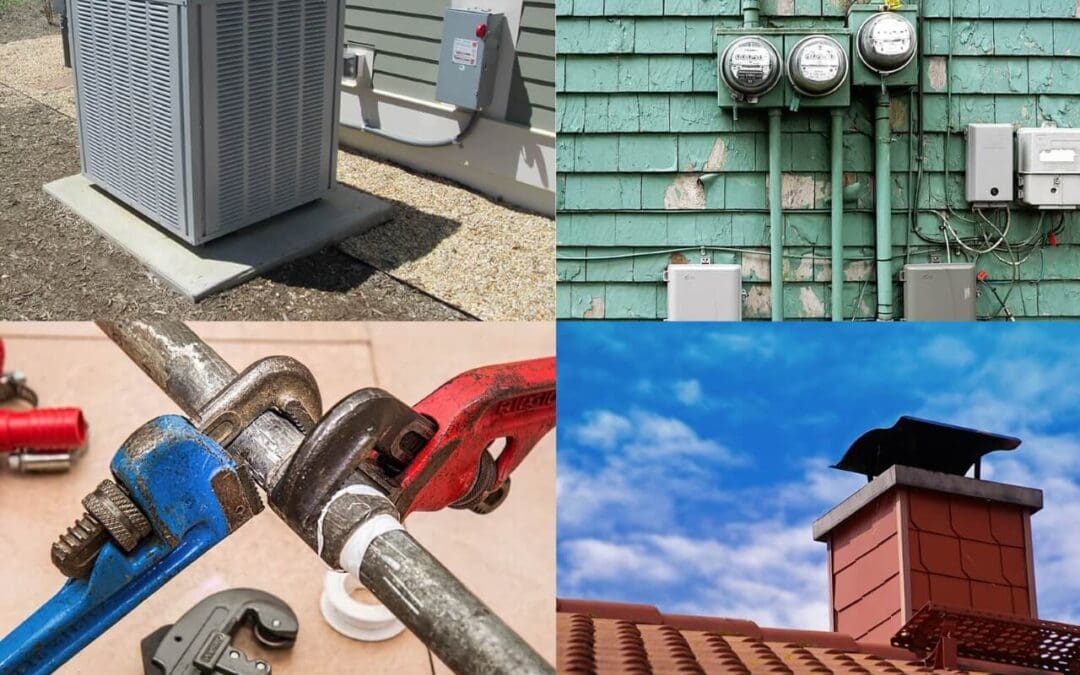If you’re buying a home, selling a home, or simply shopping for a new homeowner’s insurance policy, you’ve likely encountered two distinct phrases: a standard home inspection and a 4-point inspection. While both involve a professional inspector looking closely at a property, they serve entirely different purposes, focus on different areas, and produce different outcomes. Understanding the distinction, especially the focused nature of the 4-point inspection, is key to navigating insurance requirements and property assessments efficiently.
What is a Standard Home Inspection?
A standard home inspection is a comprehensive, non-invasive visual examination of a residential property. Its primary purpose is to provide a potential buyer or current homeowner with an overview of the home’s condition. The report covers hundreds of items across the property, including the structure, foundation, roofing, exterior, insulation, heating/cooling systems, plumbing, electrical, interior components, and even grading. The goal is to identify defects, safety issues, and any areas that may require significant repairs or maintenance. A typical home inspection report is a detailed document that acts as a blueprint of the home’s condition, giving the buyer leverage in negotiations or providing the seller with a list of pre-sale repairs. This inspection is important for understanding the overall health of a house, but it is not typically required by insurance companies.
The Focused Scope of the 4-Point Inspection
The 4-point inspection is far narrower in scope than a standard home inspection. Its sole purpose is not to assess the home’s overall condition, but specifically to evaluate four critical systems that insurance carriers care about most: the roof, electrical system, plumbing system, and HVAC (heating, ventilation, and air conditioning) system. This inspection is most frequently requested by insurance companies, particularly when a home is older (often 20 years or more). Insurers want to ensure these four systems are well-maintained, functional, and not imminent liabilities that could lead to large claims, such as fire or water damage. A successful 4-point inspection confirms that the home meets current underwriting standards for these major components.
Deep Dive: The Four Points of the 4-Point Inspection
The 4-point inspection zeroes in on the four areas that pose the greatest liability risk for an insurance company. First, the inspector assesses the roof, looking at the covering type, overall condition, and its remaining useful life. Insurers need assurance that the roof won’t fail during the policy period. If the roof has less than 3 to 5 years of remaining, the insurer may deny coverage until it is replaced. Second, the electrical system is examined. This point scrutinizes the panel (its brand, condition, and capacity), the wiring type (checking for high fire risks like aluminum or knob-and-tube), and the presence of any obvious safety hazards.
Third, the plumbing system is inspected. The inspector looks at the type of plumbing materials (checking for materials prone to failure), the age and condition of the water heater, and evidence of current or potential leaks. Water damage claims are expensive, making this system a key focus. Finally, the HVAC system is evaluated. The inspector identifies the age and condition of the main heating and cooling systems. An old or malfunctioning unit may still be deemed a liability or fire risk by the insurance carrier.
When Do You Need a 4-Point Inspection?
A 4-point is generally not required for newly constructed homes or modern homes. It primarily comes into play under two common scenarios: when purchasing an older home, as insurance carriers often require the inspection for properties over a certain age (e.g., 30 years); and when changing insurance carriers, as the new company will frequently require a current inspection to ensure the property meets their current underwriting criteria before they approve the policy.
Frequently Asked Questions (FAQs)
Can I use a standard home inspection instead of a 4-point?
Usually not. While the standard inspection covers the four systems, the insurance company requires the specific format and focused documentation of the 4-point inspection report.
What happens if my home fails the 4-point inspection?
If a system fails, the insurance company may deny coverage. You will typically be required to repair or replace the failing system and have a new 4-point inspection performed before coverage is granted.
Do 4-point inspections cover the entire plumbing system?
The inspector visually checks exposed pipes, material types, and the water heater. They do not typically perform invasive checks like sewer line scoping or testing water flow behind walls; their focus is on visible signs of liability and pipe material type.
How long is a 4-point inspection valid?
The validity period depends on the insurer, but they are generally valid for one to five years. For older homes, an insurer may require a new 4-point inspection with every policy renewal.
Oasis Home Inspections provides inspection services in Brevard County, Florida, including marine structure inspections. If you’re buying or selling a home, contact us to request an appointment.
